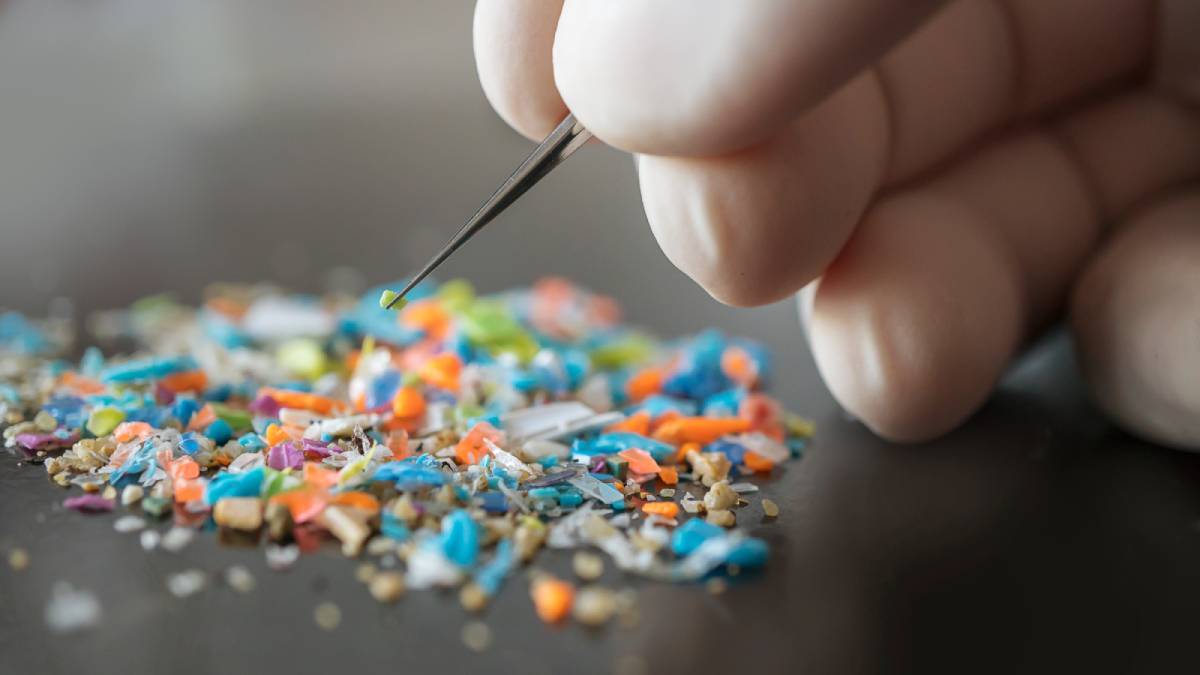Microplastics, or microscopic (up to 5 mm in diameter) plastic particles present in everyday items such as cigarettes, food, drinking water, clothes, and cosmetics, are the result of long-term human use of plastics and the irresponsible disposal of said plastic products, leading to widespread plastic pollution.1 Since the presence of these anthropogenic pollutants were detected, there has been widespread concern about the potential health impacts of microplastics present in objects we ingest, wear, or apply to our skin on a daily basis. While some of the concerns may be unwarranted, it is nonetheless important for physicians to be aware of the potential detrimental impacts of microplastics on patients such that they can provide appropriate health advice.
The first question to answer, of course, is whether microplastics are both abundant enough and harmful enough to merit such caution. The idea that microplastics may impact human health came from understanding the properties of these particles: because of their small size, they are easily propagated through the air and are difficult to detect, meaning that it is possible for humans and nonhuman animals alike to ingest and accumulate large quantities of microplastics over the course of their lives. In fact, it is estimated that humans consume over 52,000 fragments of microplastics per year through food alone.2 Unfortunately, studies have also consistently identified microplastics as a significant health hazard. Not only are many of these fragments toxic in and of themselves, but microplastics can be vectors for spreading other pollutants, in particular heavy metals and hydrophobic organic molecules, into biological tissue and organs.3
With these risks in mind, it is important to understand the mechanism and effects of microplastic toxicity. Because there is very little direct research from humans, our understanding of the biochemical effects of microplastic exposure largely comes from human cell or organoid experiments and animal model experiments. Nonetheless, cellular experiments have found that the surface charge of microplastic fragments is the greatest factor which determines their rate of adsorption by cellular membranes. Within the body, exposed to a significantly different external environment, these particles can experience an aging or weathering process that can change their chemical properties and release additional toxic particles. In previous animal experiments, outlined by Li et al. in a 2023 review, it was found that the health effects of microplastic internalization included dysfunction of the liver and intestines, immune reactions (and the subsequent increased uptake of microplastic fragments), aberrant neural development leading to learning and memory dysfunctions, and reduced fertility and developmental health.3
There are still many questions to be answered about microplastics and their impacts on human health. However, as the World Health Organization’s critical review and assessment of microplastics in drinking water (2018) argues, it is critical to standardize and refine our ability to detect microplastic fragments of varying sizes, surface qualities, and composition to adequately clean our drinking water, food, and personal items and prevent the ingestion of microplastics by humans as much as possible.4 This is an area of research that will likely continue to be critical and relevant until the medical and scientific world has either identified a reliable detection and purification method for these toxic particles or else pioneered a foolproof way of harmlessly removing these particles from the bodies of human patients.
References
(1) Microplastics: The long legacy left behind by plastic pollution. https://www.unep.org/news-and-stories/story/microplastics-long-legacy-left-behind-plastic-pollution.
(2) Are Microplastics Harmful? | Poison Control. https://www.poison.org/articles/are-microplastics-harmful.
(3) Li, Y.; Tao, L.; Wang, Q.; Wang, F.; Li, G.; Song, M. Potential Health Impact of Microplastics: A Review of Environmental Distribution, Human Exposure, and Toxic Effects. Environ. Health 2023, 1 (4), 249–257. https://doi.org/10.1021/envhealth.3c00052.
(4) Koelmans, A. A.; Mohamed Nor, N. H.; Hermsen, E.; Kooi, M.; Mintenig, S. M.; De France, J. Microplastics in Freshwaters and Drinking Water: Critical Review and Assessment of Data Quality. Water Research 2019, 155, 410–422. https://doi.org/10.1016/j.watres.2019.02.054.
